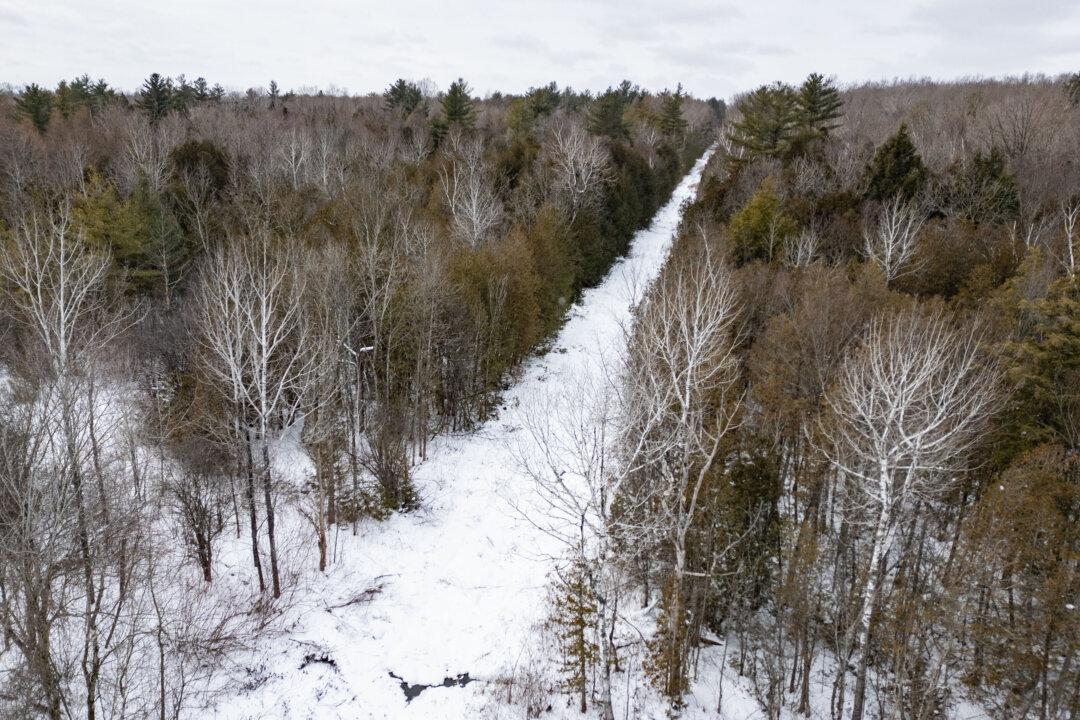TORONTO—On June 6, 1944, Jim Parks of the Royal Winnipeg Rifles was among about 14,000 Canadians who landed in Normandy, part of an Allied invasion that marked the beginning of the end of the Second World War. The casualties were heavy; by the end of the day, about 350 Canadians would be killed. Parks, who enlisted at 15 and is now 94, describes what it was like that day on Juno Beach, in his own words:



Southern England was like a sausage machine.
In April or May 1944, they had us along a roadway for about four or five days. The first people on the roads would be the first to land—that’d be H-hour. Then it’d be H plus 1, all the way up.
We were right in the front, because we were the first group. We were H minus 2.
On D-Day we were in a landing craft tank. We had mortar carriers and a trailer with extra ammunition. And bread.
The service corps issued this bag of bread, and somebody said, “How do you expect that to last? it’s going to get stale.” He said, “Oh, no, no, no, it’ll last forever. It’s loaded with formaldehyde.”
So there you are: If you got killed in action, you’re already set.
We had armoured bulldozers on our boat. We had a landing craft, and the idea was to go in with long ropes on the back with grappling hooks and two sappers. The sappers are privates and they take these ropes and grab them onto the hedgehogs.
The hedgehogs are these big obstacles in the water. They’re designed to rip the bottom of a boat when they come in and some of them had a wine bottle with explosives in a firing cap. So if you hit the firing cap, the thing would explode. Even if it didn’t, the angle would make a hole in the boat. The Germans had them all along the shore.
On the shore itself, they had casements where the Germans had their guns and machine guns and further back they had mortars and so on. Plus barbed wire and mines.
On the landing our guys were supposed to shell it, and they said nothing would be there but it didn’t do any damage because the machine guns were still operating. Everything was there waiting as if it had never been touched.
The first carrier went off and it sunk. Then our carrier that had the mortars on it, it went under the water. So we had to swim for it.
On the way in, the landing craft were still coming in. One of them sideswiped me on my left shoulder and I saw stars—I had never seen stars. I swallowed a lot of water.
I grabbed one of these hedgehogs and got my bearings a bit and then I made my way (until) I felt my feet touch the bottom.
I ran and some of the guys are lying in the sand, so I plop beside Cpl. Scaife. I knew his name because he was one of our good athletic types and was on the tug-of-war team.
He was mortally wounded, so I took his Sten gun and I took his small pack and I headed up to the pill box. I had to make sure I was under cover. And then the machine gun fire stopped, and there were mortars and snipers by that time.
We had to wait for our platoon commander to come in because we lost ours (and) we had no mortars, nothing. In the meantime, we pulled a few guys out of the water and off the beach because we’re concerned that with the tanks coming in they’d be running over them.
There was a Cpl. Martin, who was pretty well shot up. He had the froth coming out of his mouth and he said: “Hold me, I’m cold.”
I ended up holding him until he passed away.
He had a son born after he died—his wife was left pregnant when he was killed. I mentioned the story in an interview about 20 years later and I got a call from the son, he was living in Vancouver. He wanted to know about his dad.
After the war, my mother ended up having breast cancer. We’d only got back home for about three months and she was already in hospital. I remember she put her hands over on my hand and she says, “Jim, I only had you for 15 years.” She was bedridden and they did all kind of treatments, to no avail.
But joining seemed like the right thing.
I had four brothers, we all joined. My brother Jack and I were together most of the time.
It was sort of adventurous. My dad had been in World War One and there were all kinds of movies and even though it was brutal and everything else, you wanted to be in there, too.





